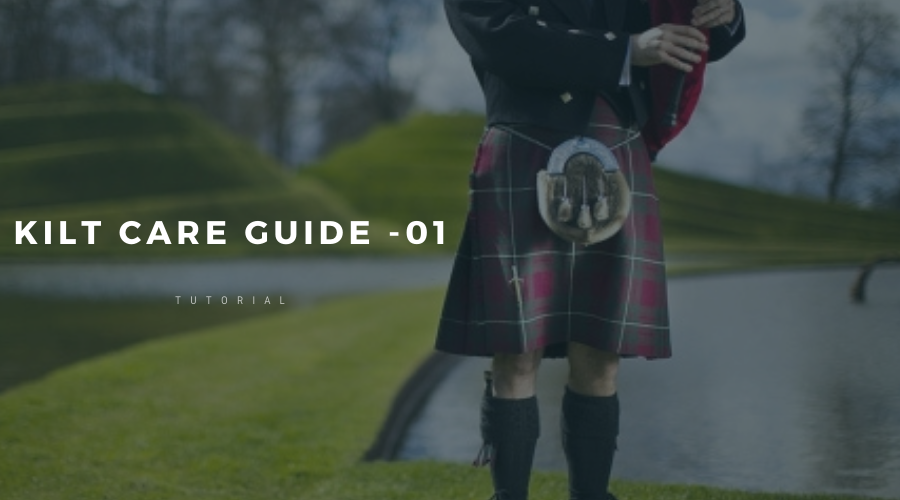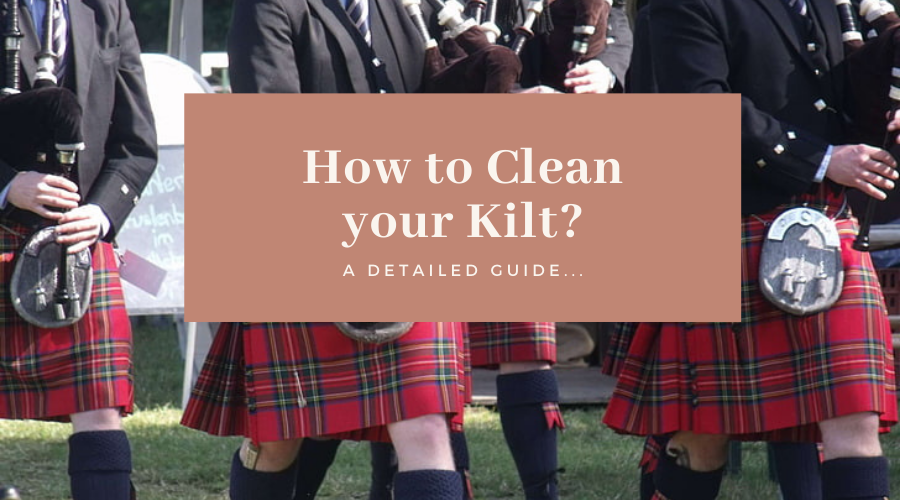If you are also the Do-it-yourself kind of guy and wanted to learn that how to make a kilt then this article is going to help you at some extent. Since, these tips and tricks for making a kilt is coming directly from our most experienced maker who has made more than 20000+ kilts by himself. The guy sharing these tips with is master in both traditional kilts and modern utility kilts.
A kilt is basically pleated wrapped skirt (duh… its not a skirt); however, there is also contemporary extension to the traditional kilts which is called Utility kilt or modern kilts. I will be discussing the making of a traditional kilt and also a modern utility kilt.
Checkout: How to Wear a kilt?
Table of Contents
How to Make a Kilt?
Here I will be sharing some basic and tricks about making a kilt so let’s get to the work.
How to make a great Kilt or a traditional Tartan kilt?
Making a great kilt or traditional tartan kilt is kind of same as there nothing much to do as far the stitching is concerned. Although it requires lots of patience and precision while making a great kilt or a traditional tartan kilt.
Step 1 – You need to get the measurements first!
This is the prime and initial step of making a kilt that goes for both traditional kilt or a traditional kilt.
Primarily you require three measurements for making a basic kilt and that are as follows;
- Waist
- Hips
- Length
In order to measure your model correctly, you need to follow our Kilt measurement guide here.
Step 2 – Preparing the Kilt Material – Tartan in this case!
The true tartan material has finished salvage edge which will be used as the bottom of the kilt (hem). In case, the material does not have a finish edge then you should start hemming the material at top and bottom edge and make sure that hem on both top and bottom hedge should match the pattern while sewing. Then you need to cut the material into two strips and it should be wide enough to measure from waist to bottom of the hem. It will leave a long center strip that will partially be used for waist-band. Then you need to sew the two wide hemmed pieces together and do ensure that it matches the patter of sett.
Then you need to finish the top edge of the material by serging, running a zigzag stitch or you may also use an anti-fraying spray for that.
Step 3 – Making an Apron
An apron is the front of the kilt that will be buckled up on the right size. However, you need to make sure that tartan needs to be centered properly. You are supposed to fold under at least 6 inches while starting and after that make a deep, double width pleat on the left.
Then continue pleating with single-width pleat – keep doing that till the safety pin at the hip. After that, pin in a wide double sett width box pleat at the opposite end of pleating. Now you need to measure the inside apron so that it matches the outside apron, and then pin back the end.
Step 4 – Pleating the Kilt!
This is one of the crucial and most critical marking of making a tartan kilt. So you need to do it right!
Each part of the material doubled for pleat should be of 8 inches (strict) and the exposed part will be 5/8 to 1 inch. You can mark the one sett on piece of a cardboard for precision. Then you need to divide the pattern of setts into equal parts.
It is like a section of two wide strips of color with a narrow stripe in the middle looks best divided into three sections where you need to center the strips in middle section. Furthermore, a sett of 8 inches can further be divided into 8 or more sections. You can use the piece of cardboard as measuring tool.
To duplicate the process, you need to overlay the pleat over the matching pattern in next sett.
Step 5 – Hip to Waist Adjustment
You need to keep the first and last pleat straight and dart can be used for keeping that straight. It will adjust the apron for one of the half waist/hip difference and other half should spread equally between the pleats with the help of pins.
You may also mark the angles of the pleat adjustment using a temporary marker in order to ensure the straight stitching.
Step 6 – Basting in Pleats
You need do 2 rows of basting approximately ¼ and ½ of the way up from bottom edge of the fabric. A running stitch can be used for catching the edge of pleat as it will make the material more compact and easy to work with while sewing also making steam pressing much easier.
Step 7 – Stitching the Pleats
You need to use a blind stitch starting at the bottom of the pleat. Then you need to fasten the thread ½ inch from reverse edge of the pleat; you need start 2 stitches in order to fasten the bottom and then you need to run the needle under 3 threads of the bottom material and then you need to straight up to the top material of the pleat. After that you need to run the needle from the top material approximately 3 threads back down to the bottom. It approximately produces 10 stitches per inch.
Step 8 – Trimming the Back of the Pleats
You need to trim the excess of material from the top of each pleat, from waist to 1 inch above the hip line. This strip would be 1 ½ to 2 inches deep removing the bulk of material from inside.
Step 9 – Adding Fringes
You need to cut the wide piece of material from length of the kilt. Then you need to fold this piece in half so that it can give double thickness to the fringes. Now it needed to be sewn into double edge folded in the right side of apron.
Step 10 – Adding the waistband
Now you need to cut the 5 inches stripe for waistband. You need to make sure that pattern for apron and beginning of the waistband should match. Now you need to turn bottom edge of the waistband stripe under ½ inch and stitch 1 to 1 ½ inches from the top edge of the apron of kilt using the blind stitching. After that you need to overlap the remaining width over the top of the kilt. The lining will cover up this side so it won’t need any finishing.
Step 11 – Adding lining
Now you are supposed to stitch in the lining of duck material at the top of inside waistband by doing apron an overlap stitching along top and inside the apron by taking bottom edge of middle section to the back of pleats. You need to make sure that dept of the pleat should be sewn down pleat. One more thing to remember that bottom of the apron lining should be left loose by hemming turned under edge of the lining to itself.
Step 12 – Adding Buckles and Leather Straps
You need to punch few holes at the sqareend of the leather straps. After that you need to sew the straps to the inside of the next to the fringe where you need to position the top straps just below the waistband and the other just above the bottom of sewn down pleat. Afterwards, you need to tack the lining over the sewn-in straps. Now you are supposed to sew the buckles on pleated area which is 2 inches to the right of the fringed size of apron.
Step 13 – Adding Velcro Inside the Waistband
Instead of adding a third strap, it is recomended to use Velcro inside the waistband which will help you to hold the kilt with or without a belt.
Step 14 – Finalization
You need to take a wet cloth and press the pleats using that. Now you need to hold the iron on each pleat to steam in pleats and keep moving to each pleat one by one. Make sure you put any heavy object on each ironed pleat for settling it down.
How to make a Utility kilt?
Making a Modern utility kilt require stitching expertise and could not be done at home as it requires lots of technical stuffs that needs to be learned. In order to master that you need to learn stitching altogether.
Sum Up
This was a complete guide that must have helped you to understand that how to make a kilt and I am sure you guys must have understood the process.
Don’t forget to share this with others.

